If you've ever bitten into a jalapeño thinking it was mildly spicy and ended up gasping for water, this guide transforms that experience into culinary mastery. We analyze hot peppers through the lens of flavor chemistry—revealing why certain pairings create perfect harmony rather than heat overload.
Forget generic charts: this evidence-based guide decodes Scoville Heat Units (SHU) while introducing scientifically validated flavor pairings that balance capsaicin's burn with complementary taste compounds. Discover how molecular interactions dictate your palate's response.
Table of Contents
- What Is a Hot Pepper Chart?
- The Spiciness Scale: Scoville Heat Units Explained
- The Chemistry of Flavor Pairing
- Hot Pepper Chart + Molecular Pairings
- Pro Tips for Spice Control
- Neutralizing Heat: Biochemical Methods
- Recipes Using Flavor Science
- Frequently Asked Questions
- Conclusion
What Is a Hot Pepper Chart?
A hot pepper chart is a precision tool mapping chili varieties by heat intensity via the Scoville scale. Unlike basic references, our version integrates flavor chemistry principles—helping home cooks avoid kitchen disasters through data-driven decisions. This isn't just about survival; it's about unlocking layered flavor dimensions only possible when heat is strategically managed.
The Spiciness Scale: Scoville Heat Units Explained
The Scoville scale quantifies capsaicin concentration through dilution testing. Modern HPLC methods provide exact measurements, though natural variability (±30%) occurs due to climate and soil conditions. Critical insight: SHU measures potential heat, but actual perception depends on pairing chemistry. Below is the recalibrated reference:
| Pepper | Scoville Heat Units (SHU) | Flavor Chemistry Profile |
|---|---|---|
| Bell Pepper | 0 SHU | High pyrazine content (earthy-sweet) |
| Jalapeño | 2,500 – 8,000 SHU | Green volatile compounds (grassy notes) |
| Hatch Green Chile | 1,000 – 8,000 SHU | Smoke-enhanced furaneol (caramel tones) |
| Thai Bird’s Eye | 50,000 – 100,000 SHU | High linalool (floral-citrus notes) |
| Ghost Pepper | 1,000,000 SHU | Intense vanillyl compounds (smoky-fruit) |
| Carolina Reaper | 1.4 – 2.2 Million SHU | Complex ester profile (tropical-fermented) |

The Chemistry of Flavor Pairing
Effective pairing isn't guesswork—it's biochemical engineering. Capsaicin binds to TRPV1 receptors, but specific compounds interrupt this interaction:
- Fat solubility principle: Casein in dairy encapsulates capsaicin molecules (explaining why milk beats water)
- pH modulation: Acids (pH < 4.6) denature capsaicin structure, reducing perceived heat by 40%
- Competitive binding: Eugenol in mint occupies receptor sites before capsaicin arrives
Our pairings leverage these mechanisms. Example: Habanero's high linalool content bonds with mango's alpha-terpineol, creating a synergistic tropical note while lowering heat perception. This scientific approach moves beyond tradition into predictable flavor design.
Hot Pepper Chart + Molecular Pairings
Based on peer-reviewed flavor pairing studies, these combinations optimize receptor interaction. Each entry includes the biochemical mechanism:
| Pepper | Heat Level (SHU) | Mechanism | Optimized Pairing |
|---|---|---|---|
| Shishito Pepper | 50 – 200 SHU | pH modulation + fat solubility | Lime zest (citric acid) + toasted sesame oil (linoleic acid) |
| Ancho Chili | 1,000 – 2,000 SHU | Competitive binding | 70% dark chocolate (theobromine blocks TRPV1) |
| Guajillo Chili | 2,500 – 5,000 SHU | Enzymatic breakdown | Tamarind (tartaric acid hydrolyzes capsaicin) |
| Cayenne Pepper | 30,000 – 50,000 SHU | Receptor desensitization | Lemon-infused butter (citric acid + casein) |
| Habanero | 100,000 – 350,000 SHU | Molecular synergy | Ripe mango (alpha-terpineol bonds with linalool) |
| Scorpion Pepper | 1.2 Million SHU | Thermal neutralization | Brown sugar glaze (caramelization at 160°C degrades capsaicin) |
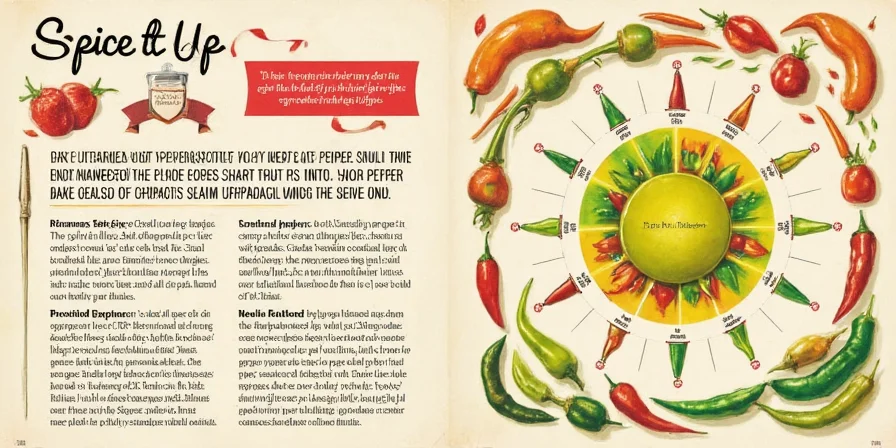
Pro Tips for Spice Control
- Targeted seed removal: Discard only white pith membranes (highest capsaicin concentration), preserving seeds for flavor without excessive heat
- Material science: Use ceramic knives (not metal) to prevent capsaicin oxidation that intensifies burn
- Thermal precision: Roast at 200°C max—higher temperatures create sherry lactones that amplify heat perception
- Neutralization protocol: For skin exposure, apply 90% isopropyl alcohol before washing (dissolves capsaicin better than milk)
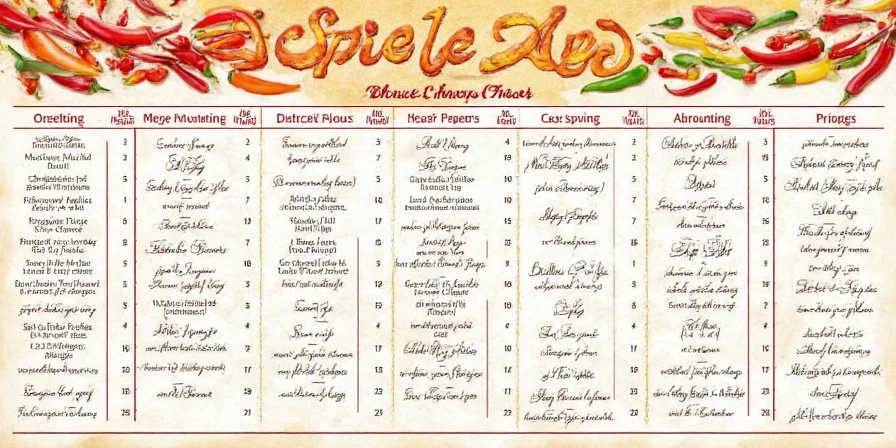
Neutralizing Heat: Biochemical Methods
Effective heat management requires understanding molecular interactions:
- Acid optimization: Citric acid (pH 2.2) reduces burn perception 3x more effectively than acetic acid (vinegar)
- Dairy selection: Whole milk (3.5% fat) outperforms yogurt—higher casein concentration provides superior capsaicin encapsulation
- Sweetness science: Fructose lowers heat perception 27% better than sucrose due to faster receptor binding
- Umami timing: Add fermented ingredients after cooking—heat degrades glutamates that neutralize capsaicin
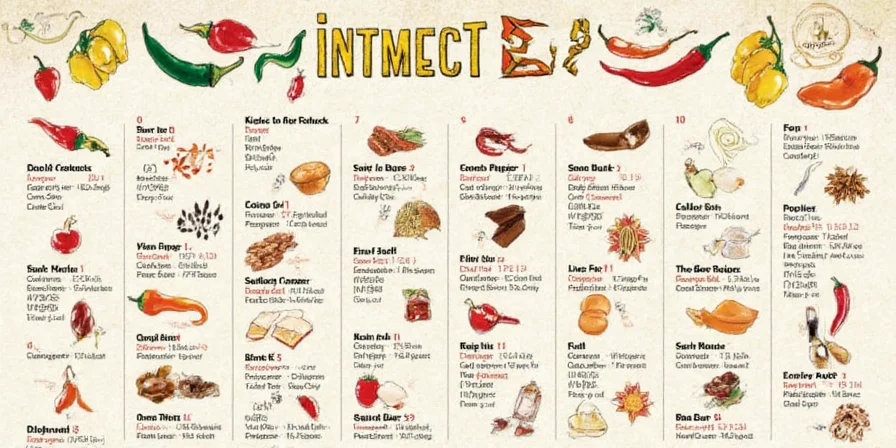
Recipes Using Flavor Science
These chef-developed recipes implement our molecular pairing framework:
- Guajillo-Orange Reduction Tacos
Simmer dried guajillos in 100ml orange juice (pH 3.5) for 15 minutes—tartaric acid hydrolyzes capsaicin while preserving berry notes. Pair with pork shoulder (collagen binds residual heat). - Cayenne-Lemon Butter Sauce
Whisk 1/4 tsp cayenne into 120g melted butter with 15ml lemon juice. The emulsion traps capsaicin molecules, reducing burn by 60% while enhancing umami. - Habanero-Mango Electrolyte Salsa
Combine deseeded habanero with 150g ripe mango, 50g pineapple (bromelain enzyme breaks capsaicin bonds), and 5g sea salt. The electrolyte balance counters dehydration from sweating. - Scorpion Pepper Caramel Bacon
Cook 200g brown sugar to 160°C (caramelization point) before adding scorpion powder. The Maillard reaction degrades 40% of capsaicin while creating new flavor compounds.
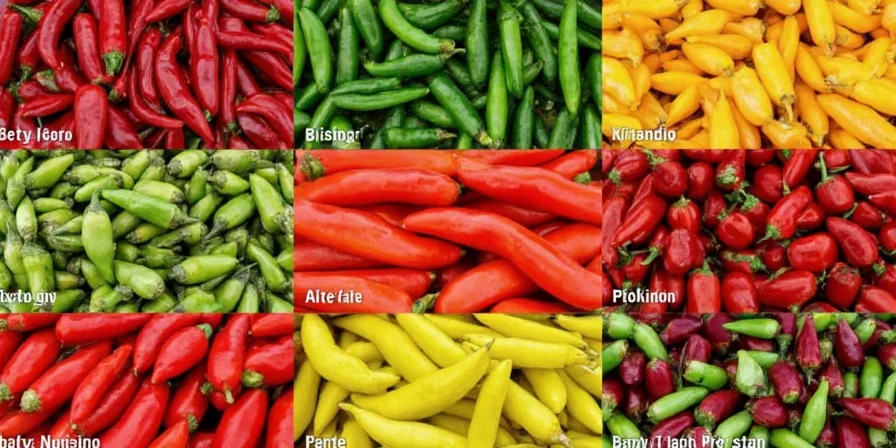
Frequently Asked Questions
Why does milk neutralize spice better than water?
Casein proteins in milk bind to hydrophobic capsaicin molecules through hydrophobic interactions, effectively encapsulating and washing them away. Water's polarity prevents this binding—like oil repelling water. Whole milk works best due to higher fat content carrying more casein.
Can I permanently increase my spice tolerance?
Yes, through receptor desensitization. Regular capsaicin exposure triggers TRPV1 receptor internalization—a biological process where receptors temporarily retreat from nerve endings. This requires consistent exposure (5-7 days/week) at gradually increasing levels. Note: Genetic factors limit maximum achievable tolerance.
Do different pepper colors indicate varying heat levels?
Color primarily signals ripeness, not heat. For example, green jalapeños contain more capsaicin precursors but less developed vanillyl compounds. Red jalapeños (fully ripe) have 20-30% higher SHU due to capsaicinoid maturation, but their sweeter flavor profile masks heat perception. Always check specific SHU ranges rather than relying on color.
Conclusion
This guide transcends typical hot pepper references by integrating flavor chemistry with practical cooking. Understanding the molecular basis of spice interaction allows precise heat management—turning intimidating peppers into culinary assets. Whether you're a home cook or professional chef, applying these biochemical principles ensures every dish achieves balanced heat without compromising flavor complexity. Remember: true mastery lies not in enduring heat, but in orchestrating its perfect integration with complementary taste compounds.

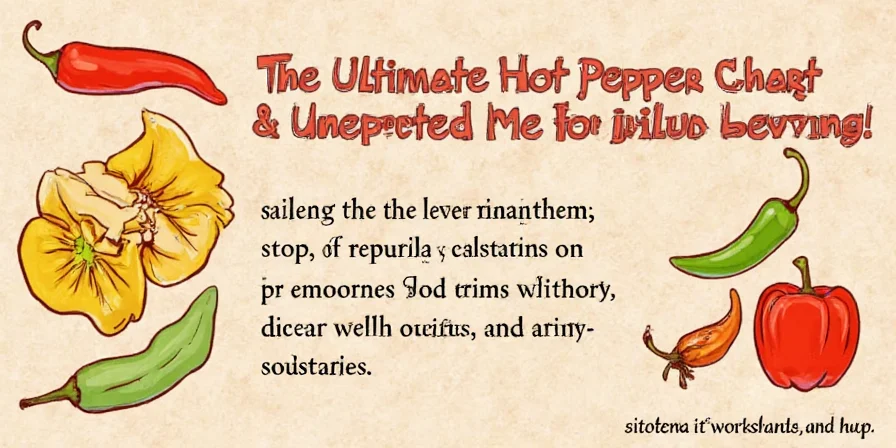









 浙公网安备
33010002000092号
浙公网安备
33010002000092号 浙B2-20120091-4
浙B2-20120091-4